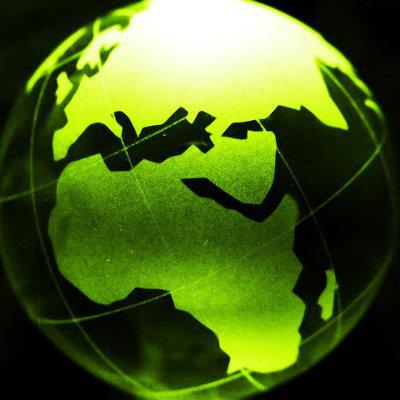Courtesy : onlinepmcourses.com
Green project
Green Project Management is not yet on everybody’s lips. But it ought to be. The priority for sustainability in project management is an imperative that we need to heed. And some Project Managers are dealing with the challenges of sustainable project management every day.
But others are ill-informed about what it means and how to lead a green project. For them, green project management is little more than jargon. This cannot continue. The world has woken up to the need to control our development to make it more sustainable. And green project management has a large part to play. Project Managers who cannot play their part will be of less value in the global career market place.
The World’s Agenda is Finally Shifting
This autumn (2020), China has set out its firm intent to become Carbon-neutral by 2060. And the European Union and the United Kingdom have signaled similar announcements at the end of 2020. Whilst the current (2017-20) US administration has set its face against dealing with the causes and impacts of global climate change, it is a big issue in the forthcoming US Presidential election.
As a Project Manager, I am acutely aware of our roles in building the infrastructure, products, and services that will define our futures. This places upon us a responsibility to act mindfully in all the projects we lead. So I thought it important to offer my readers an informed perspective on what we mean when we talk of green project management and sustainability in project management.
CONTENT

Over to Rich…
What is Green Project Management?
Let me start by answering a key question: what do we mean by green project management?
Actually, green project management is a very limiting way to describe the important themes I want to convey to you. To me, the phrase ‘green project management’ evokes images of windmills and daisies, children running happily through a field, or a school of neon-colored tropical fish meandering through the coral. Sure, a ‘green project’ could be one that yields a wind farm or other renewable energy source. It could be an effort to save a species of coral or fish, or… daisies.
Green Project Management means More than Ecology
However, the real idea that I want to convey is not at all limited to ecology. Of course, it includes ecological initiatives, but it’s by no means limited to them.
I’d like you to walk away from this article with three key takeaways.
- Sustainability is not always about “green”
- You, your project, your enterprise, and your planet will benefit from taking a holistic, long-term perspective about project success when initiating, planning, and executing a project
- You have considerably more power than you think regarding how to use that perspective to affect project decisions
The discussion I want to continue is centered on sustainability in its true, fullest sense. As you probably know, sustainability has three elements (ecological, economic, and social – see figure).

Many people also call this ‘People, Planet, and Profit’. Also, this sometimes comes under the umbrella of ‘Corporate Social Responsibility’, although I prefer to stick with the idea of ‘the Triple Bottom Line’. When we say ‘green project management’ we mean that the project has considered the long term for all of these aspects:
- People
the Social Dimension - Planet
the Environmental Dimension - Profit
the Economic Dimension
The Three Questions
That leads to an important question. It is the first question we are used to asking about our projects:
- ‘Will the project generate value – economically – for a sustained period of time?’
However, that question may not be the right question to ask if we are a Government agency. Certainly, it is not the only question to ask even if this is a for-profit enterprise. The remaining questions are:
- ‘Will this project contribute positively to society?’
Or, at least, will it limit any negative impacts on society? - ‘Will this project contribute positively to the environment?’
Or, at least, will it limit any negative impacts on the environment?
The Triple Bottom Line
The idea of a Triple Bottom Line (TBL) was coined by John Elkington, founder of the UK consultancy SustainAbility, in 1994.
He suggested that, in addition to the usual profit-based bottom-line measure of a company’s performance, businesses should also prepare bottom line measures in a ‘people account’ and in a ‘planet account’; giving rise to the three pillars of profit, people, and planet.
These are often represented as three overlapping circles of concern that clearly represent three views of overlapping stakeholder groups.
Elkington describes the Triple Bottom Line in his 1997 book, ‘Cannibals With Forks: The Triple Bottom Line Of 21st Century Business’.
A Rainbow of Green Project Management
That said, we can consider green project management in terms of a ‘rainbow of green’ which spans the idea of a wind farm or species-saving initiative, to a project which by its very nature has seemingly nothing to do with ecology, or the local community, or anything approaching the stereotypical idea of a ‘green’ project.

In the figure above you can see that this spectrum has four points to illustrate the range of green projects.
1. Projects which are Green by Definition
Projects that are ‘Green by Definition’ have the attribute of being strongly associated with the environment. Any project stakeholder would immediately recognize the connection to ‘saving the planet’, or perhaps the local community. Examples could be:
- building a wind farm
- an initiative to save a species
- the conversion by Amazon to an all-electric vehicle fleet
- an endeavor by a food manufacturer to source only fair-trade suppliers of chocolate (Yum)
2. Projects that are Green by Project Impact
These are projects – often infrastructure projects – that involve construction, moving of earth, heavy use of machinery. They will likely have a big impact (a negative one) on the community or the environment as they are built, after they are built, or likely both. With this type of project, the goal, therefore, is to minimize those negative impacts. Examples:
- Britain’s Crossrail and HS2 projects
- Any of the projects in China’s Belt and Road program
- Boston’s ‘Big Dig’
- India’s Narmada Valley Development and Chenab River Railway Bridge projects
- Saudi Arabia’s King Hamad Causeway
Do take a look at our recent article on Major Projects, by Jonathan Norman: The Major Projects World: What you Need to Know and How to Get Started
3. Projects which are Green by Product Impact
Some projects are about designing and creating a product or service that necessarily has an environmental impact. We are talking here about the product of the project – the product or service used in the steady-state. This is the Green by Product Impact type. An example would be a new single-serve coffee-maker which, although using fair-trade coffee, also produces a non-recyclable plastic cup after each use. Globally, these produce an average of 11 billion waste cups per year. And most of those cups ending up in landfill. So the Project Manager has a big role in creating a sustainability agenda for their project.
4. Projects which are Green in General
These are projects which don’t seem to have any connection at all to sustainability, or ‘green’. They aren’t trying to reduce consumption of energy, they don’t save any species, and they aren’t trying to fix a social problem. An example is a new release of accounting software. Its purpose is just to make life easier for accountants and to make money for the software company.






